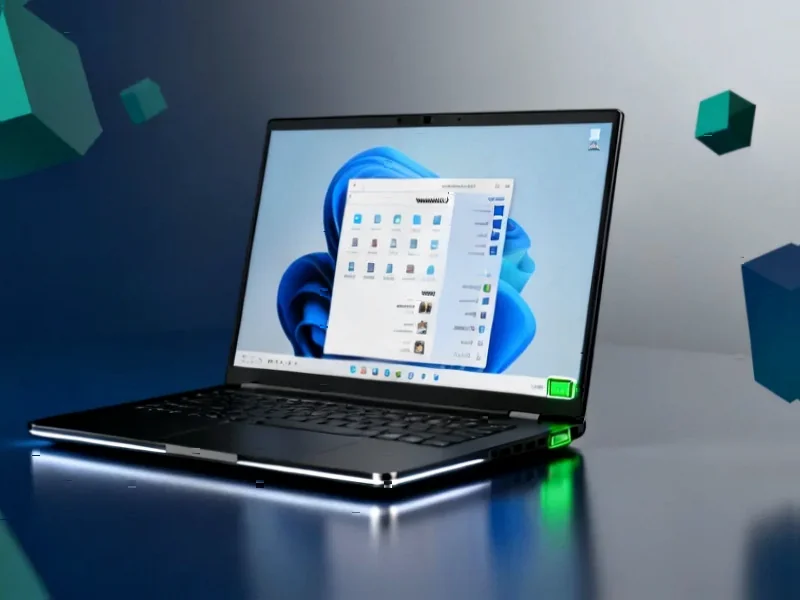According to Phys.org, University of Michigan physics professor Lu Li and an international team of researchers have discovered that quantum oscillations in insulating materials originate from the bulk rather than just the surface. The research, published in Physical Review Letters, involved more than a dozen collaborators from six U.S. and Japanese institutions using the National Magnetic Field Laboratory’s 35 Tesla magnet—approximately 35 times stronger than MRI machines. The team studied ytterbium boride (YbB12) and found that the “new duality” phenomenon, where materials exhibit both conductor and insulator behaviors, occurs throughout the entire compound rather than being surface-limited. This discovery challenges the prevailing assumption that such quantum effects were surface phenomena with potential applications in topological insulators.
Table of Contents
The Fundamental Puzzle of Quantum Oscillations
Quantum oscillations represent one of the most fundamental phenomena in condensed matter physics, traditionally serving as a hallmark of metallic behavior. In conventional metals, electrons move freely and respond to magnetic fields by oscillating in predictable patterns that reveal crucial information about the material’s electronic structure. What makes this discovery particularly baffling is that insulators, by definition, should not exhibit these oscillations because their electrons are tightly bound and cannot move freely. The finding that these oscillations persist in ytterbium boride—a known insulator—suggests our fundamental understanding of electron behavior in solids may need significant revision. This isn’t merely an academic curiosity; it challenges the very classification system we use to understand materials.
The Role of Extreme Magnetic Environments
The requirement of a 35 Tesla magnetic field for observing this phenomenon highlights how extreme conditions can reveal behaviors that remain hidden under normal laboratory settings. Most practical applications operate at magnetic fields thousands of times weaker, which immediately raises questions about whether this effect can be engineered to occur under more accessible conditions. The National Magnetic Field Laboratory represents one of the few facilities worldwide capable of generating such intense fields, making this research inherently difficult to replicate or build upon. What’s particularly intriguing is whether these bulk quantum oscillations represent a fundamentally new state of matter that only emerges when electrons are subjected to such extreme forces, or if we’re seeing a precursor to effects that might be achievable through other means.
Theoretical Challenges and the “New Duality”
Professor Li’s concept of the “new duality” represents a profound shift in how we conceptualize material behavior. Just as wave-particle duality revolutionized physics a century ago, this conductor-insulator duality could fundamentally alter our approach to material design. The research published in Physical Review Letters forces theorists to confront several uncomfortable questions: What neutral particles could be responsible for these oscillations if not conventional electrons? How does an insulator maintain its insulating properties while simultaneously exhibiting metallic oscillations throughout its bulk? The answers may lie in emergent phenomena where collective behaviors of many particles create entirely new quasiparticles with properties unlike anything in our current understanding of electron physics.
The Application Conundrum
While the researchers openly acknowledge the lack of immediate applications, this discovery represents a classic example of fundamental research that could eventually transform technology in unexpected ways. The surface-origin hypothesis would have been more immediately useful, as surface states in topological insulators are already being explored for quantum computing and novel electronic devices. Bulk phenomena present significantly greater engineering challenges, particularly when they require extreme conditions. However, history shows that today’s laboratory curiosities often become tomorrow’s technological foundations—the quantum Hall effect, once considered an esoteric phenomenon, now underpins our definition of electrical resistance standards. The real breakthrough will come when researchers can either reproduce these effects at lower fields or discover materials that exhibit similar behavior under more practical conditions.
Where This Discovery Leads
The most immediate impact of this research will be in guiding theoretical work and inspiring similar experiments on other materials. Researchers will now need to re-examine previous assumptions about surface-dominated phenomena in various quantum materials. The international collaboration aspect is particularly significant—such complex experiments require diverse expertise and access to unique facilities that no single institution possesses. As graduate student Yuan Zhu noted, the hope is that these findings will motivate both experimental and theoretical work to identify the mysterious neutral particles responsible for the observed behavior. This represents exactly the type of foundational discovery that pushes entire fields forward, even if the practical applications remain elusive for the foreseeable future.



